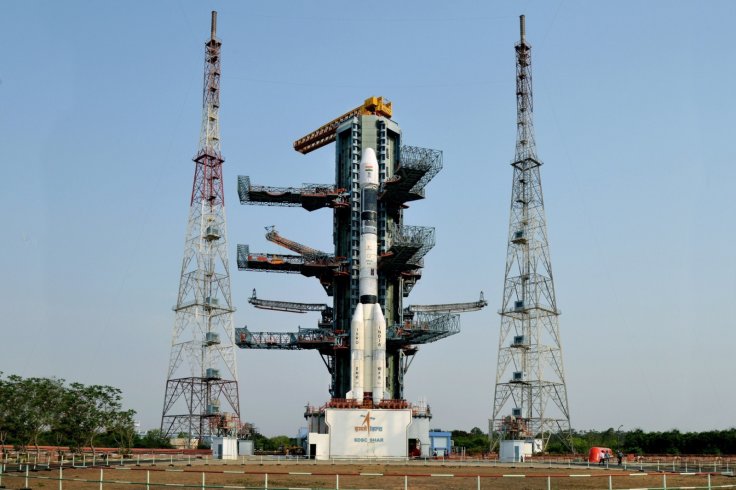
The 27-hour countdown has begun for ISRO's next Geosynchronous Satellite Launch Vehicle (GSLV) launch on Thursday, March 29, carrying communication satellite GSAT-6A, following the clearance given by the Indian Space Research Organisation 's committee on Mission Readiness Review (MRR) and Launch Authorisation Board (LAB).
The 415.6 ton GSLV rocket measuring 49.1 metre tall is scheduled to blast off at 4.56 p.m. from the second launch pad at Indian rocket port in Sriharikota, in Andhra Pradesh. The GSAT-6A satellite will be put into orbit after 17 minutes liftoff of the rocket.
This time around, ISRO has made two major improvements -- induction of high thrust Vikas engine and electromechanical actuation system -- which will prove crucial during the second stage of the rocket launch, to test viability for a lunar mission in the future.
The Vikas engine's updated version has a chamber pressure of 58.5 bar as against 52.5 bar in the older version. It uses UH25 fuel, which is a mixture of unsymmetrical di-methyl hydrazine and hydrazine hydrate and nitrogen tetroxide as oxidiser. It produces a thrust of 800 kN compared to 725kN in the previous version. Vikas engines are meant for the second stage of Polar Satellite Launch Vehicle (PSLV) and for the second and the four strap-on stages of the Geo-synchronous Satellite Launch Vehicle (GSLV).
The ISRO said that the GSAT-6A was similar to the GSAT-6 featuring a high power S-band communication satellite configured around I-2K bus, with a mission life of about 10 years.
The satellite will provide a platform for developing technologies such as demonstration of 6m S-Band Unfurlable Antenna, handheld ground terminals and network management techniques which will be useful in satellite-based mobile communication applications.
ISRO Chairman K.Sivan had earlier told IANS that the GSAT-6A would be followed by the launch of navigation satellite which will be in the next fiscal. The union budget for 2018-19 has given the Department of Space funds for three earth observation space crafts, four Polar Satellite Launch Vehicle (PSLV) flights and one each of Geosynchronous Satellite Launch Vehicle MkII and Mk III.
(With inputs from agencies)









